 |
 |
|
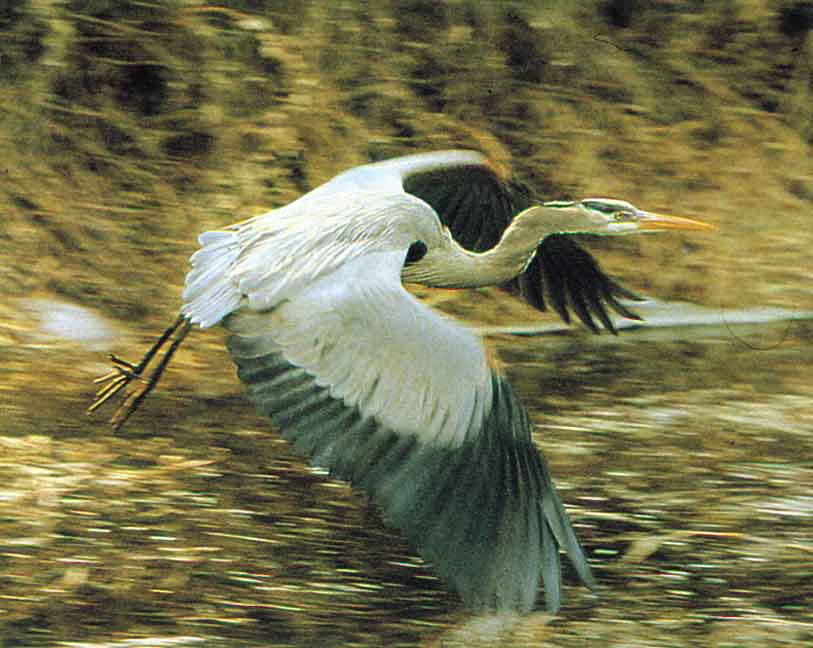 Tuttle Marsh Wildlife Area is a 5,000 acre wetland complex managed by the Huron National Forest. This healthy wetland is a birderís paradise. Many species of waterfowl, songbirds, reptiles, insects and other animals converge on these wetlands to use them as nurseries and safe havens until their young are ready to venture out on their own. 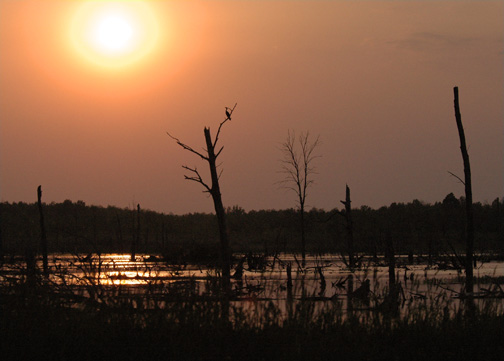 A 400-acre impoundment is at the heart of this site, which is surrounded by hundreds of additional acres of seasonally flooded wetlands, consisting of over 3-1/2 miles of level ditch network and a 2-1/2 mile low-head dam with water level control structures. To optimize nesting potential for waterfowl, 35 earthen nesting islands have been constructed within the impoundment area. There are also several osprey nesting platforms and a Great Blue Heron rookery in the impoundment. Sand Hill Cranes are occasionally observed in the grasslands at the entrance to Tuttle Marsh Road. 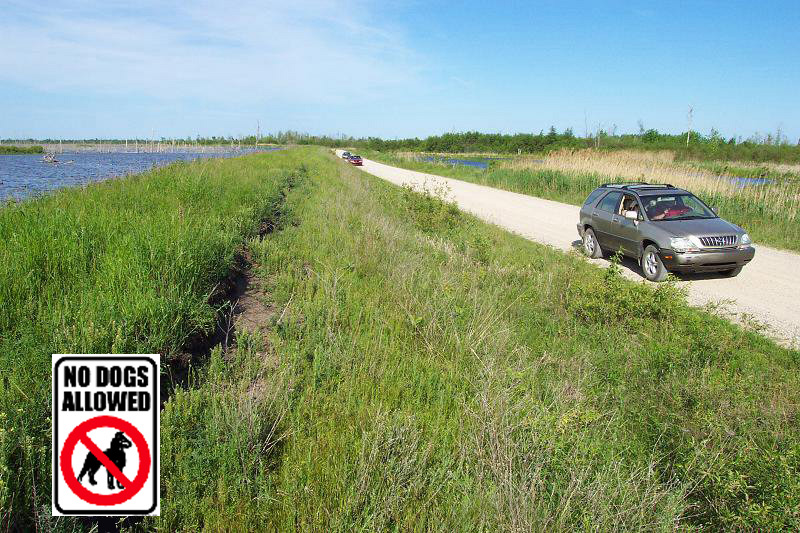 Waterfowl and wildlife are best viewed from the car window. The various species are acclimated to slow-moving motorized vehicles and will stay in their position as long as you stay in your vehicle. However, the moment a car door opens and humans step out, the wildlife will immediately flee. Please leave your family pets at home. Dogs commonly chase and harass wildlife and maim and injure the newborn critters. Waterfowl and wildlife are best viewed from the car window. The various species are acclimated to slow-moving motorized vehicles and will stay in their position as long as you stay in your vehicle. However, the moment a car door opens and humans step out, the wildlife will immediately flee. Please leave your family pets at home. Dogs commonly chase and harass wildlife and maim and injure the newborn critters.  Travel Directions 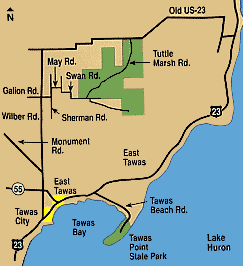 Tuttle Marsh Wildlife Area is located approximately 7 miles north of Tawas, and 6 miles southwest of Oscoda. From Tawas, travel west on M-55 one mile to Wilber Road. Turn right and proceed 4 miles to the stop sign at Galion Road. Turn right and drive 1/2 mile to Sherman Road. Turn left and continue 1.5 miles to May Road. Turn right and drive 1/2 mile to Brooks Road. Turn right and follow the winding gravel road for 3/4 mile to Tuttle Marsh Road on the left. Tuttle Marsh Road is about 4 miles long. From Oscoda, travel Old US-23 west 5 3/4 miles to Tuttle Marsh Road. Turn left into the Tuttle Marsh Wildlife Area.  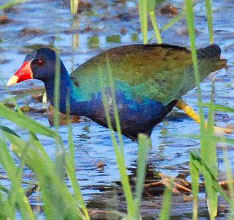 Rare Visitor: Purple Gallinule At Tuttle Marsh Rare Visitor: Purple Gallinule At Tuttle Marsh
This glossy, blue-green rail is an accidental visitor to Michigan. The Purple Gallinule inhabits marshes in the southeastern United States and Central and South America. The nearest breeding populations are found in western Tennessee and the coastal Carolinas. However, the wandering Gallinule on this page was photographed by Mark Hubinger at Tuttle Marsh on May 20, 2010. | Tuttle Marsh Wildlife Area | Iargo Springs | Kirtland's Warbler | | Return Home | Clothing & Outerwear | Footwear | Cross Country Skiing | Kayaking & Canoeing | Tawas Bird & Nature Observation | Fly Fishing | Corsair Ski Trail Conditions | Hiking & Backpacking | Events Schedule | Contact Us | |
||
 |
 |